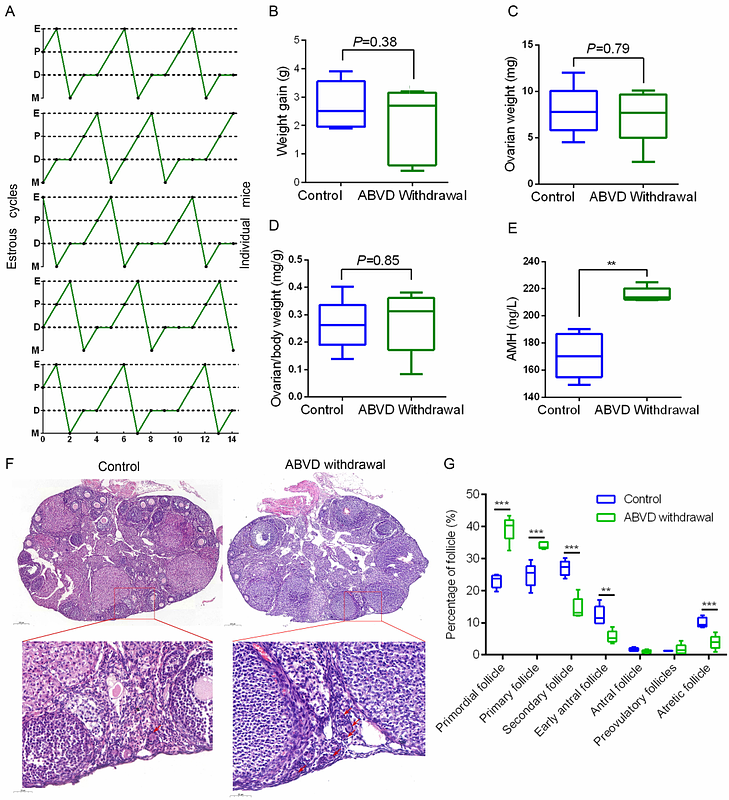Fertility recovery after combined adriamycin, bleomycin, vinblastine and dacarbazine chemotherapy in mice

Fertility recovery after combined adriamycin, bleomycin, vinblastine and dacarbazine chemotherapy in mice
Lu, X.; Turathum, B.; Chian, R.-C.; Liu, Y.
AbstractBackground: With combined adriamycin, bleomycin, vinblastine and dacarbazine (ABVD) chemotherapy and radiotherapy, most of Hodgkin lymphoma (HL) patients were cured. The effect of ABVD treatment on ovarian reserve and fertility has not been fully characterized, and whether fertility preservation is required is controversial and not empirically known. Methods: Eight-week-old female mice were injected intravenously with saline solution or ABVD for 4 weeks, respectively. Estrous cycles, level of serum anti-Mullerian hormone (AMH), body weight and ovary weight were recorded. Ovarian tissue structure and the number of follicles at each stage were analysed. IVF assay and natural mating trials were performed. Finally, transcriptome sequencing of ovarian tissue was conducted. Results: Most mice completely lost their estrous cycle soon after ABVD injection. After 4 cycles of treatments, the body weight gain and gross ovarian weight were significantly lower than those of the control. However, estrous cycles were returned to normal at 4 weeks after ABVD discontinuation. Serum AMH and the numbers of primordial follicles were significantly increased compared to controls. ABVD withdrawal did not affect the rate of cleavage or blastocyst formation in IVF assays. Furthermore, the mice were fertile and there was no significant difference in offspring weight, but the number of offspring in the ABVD discontinuation group was smaller compared with the controls. Transcriptome analyses revealed that the JAK/STAT pathway, which is involved in the inhibition of primordial follicles activation and apoptosis, was upregulated in ABVD-treated ovaries, whereas few gene expressions were altered 4 weeks after ABVD withdrawal. Conclusions: The ovarian reserve and reproductive function can be recovered after ABVD treatment, and combined ABVD treatment for a short time has a beneficial effect on the ovarian reserve, which can be used to provide a basis for guiding fertility preservation decision-making for HL patients.